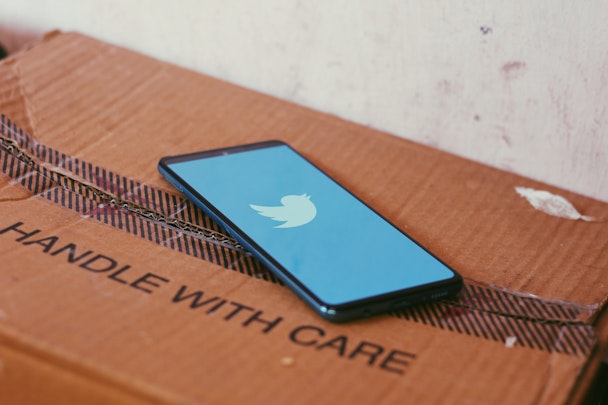$8 is the cost of a blue tick (and possibly additional rules and regulation)
Legal expert Mark Leiser digs into Elon Musk's attempts to move Twitter away from an ad-funded model.

Will Twitter 's $8 a month tier help it become less dependent on advertisers - or more dependent? / Ravi Sharma via Unsplash
Twitter CEO Elon Musk announced last week that the microblogging platform will begin charging users $8 a month to integrate the famous blue tick associated with verified accounts into their profiles. Musk has claimed that the fee will also provide additional features like the ability to post “long videos” and “creator monetization”, “priority in replies and search”.
The proposal fundamentally changes the model commonly associated with the delivery of free content vis-a-vis a platform: give us your personal data and we will allow advertisers to send efficient ads to either you or your demographic. If Musk’s plan is successfully integrated, it also risks creating a two-tier Twitter. One will be populated with users willing to pay for fewer ads and more amplification. The lower-caste will be those users unwilling or unable to pay. This group will likely receive more spam to make up the loss in advertising revenue.
For some users, the promise of amplification is enticing. A mere $8 a month for the promise of a better version of Twitter assumes that the people willing to pay for verification are the kind of users that will make Twitter better.
However, there is another interesting legal development to consider. Tweets from verified users will get promoted ‘up’ Twitter timelines, with content more visible than under the status quo. By paying a fee for amplification, there are some interesting questions about what a verified user becomes – in the legal sense. Do they, for example, automatically become an advertiser?
Under the old rules, a message is not necessarily a commercial communication. Yet, as I outline below, the new rules might directly affect Twitter and advertisers in a way not necessarily envisaged by Musk & Co. Is Twitter, as the disseminator of the communication, subjected to the legal obligations for advertisers forthcoming in the European Union’s Digital Services Act (DSA)? What legal responsibilities does amplification come with? After all, paying someone to amplify your content is a classic example of advertising spend.
Advertisement
If buying the Blue tick means that verified users’ tweets will get promotion above non-verified users, under the European Union’s Digital Services Act (DSA), this could qualify as advertising, regardless of the precise nature of the content. The text of the DSA, a major milestone in the development of platform regulation, defines advertising as:
“[I]nformation designed to promote the message of a legal or natural person, irrespective of whether to achieve commercial or non-commercial purposes, and displayed by an online platform on its online interface against remuneration specifically for promoting that information” [Emphasis added].
One might interpret this provision in a manner that suggests Twitter would have to comply with a raft of obligations designed to ensure transparency of online advertising. Let me explain.
Users are paying for the gravitas of a blue-tick. While we can debate the merits and pitfalls of this, Musk has made it clear that those accounts that have undergone verification will get their content placed above others. Paid placements of content are ads. Twitter will argue that verification does not amount to a specific promotion of specific content. This may well be true. However, the $8 fee could be seen by regulators as a license granted by Twitter which, in turn, opens the door for Twitter’s proprietary algorithms to amplify content from verified users above and beyond non-verified content. In this respect, Twitter is making quasi-editorial decisions about the placement of paid for content. It is, therefore, placing ads.
Advertisement
The DSA, designed to increase the accountability of platforms, imposes obligations on Twitter to display, in real-time and in a clear and unambiguous manner, information about any verified users’ content that makes it clear that it is an advertisement; the identity of the person on whose behalf the advertisement is displayed; and information about how the recipient to who the advertisement was displayed. It appears that the European approach to platform accountability might actually require the revelation of the very people behind the verified blue tick.
Although the DSA is not yet in effect, the implications of the $8 buy-in for verification should be very interesting to advertisers, lawyers, civil society, and politicians. With advertising defined so broadly under the DSA (including non-commercial purposes), Musk’s changes might herald in a new era of political transparency. Conversely, we might also find a slew of shell companies, backed and funded by state actors, buying up blue ticks for the purposes of disseminating authentic-looking disinformation. The Internet is somewhat unpredictable.
